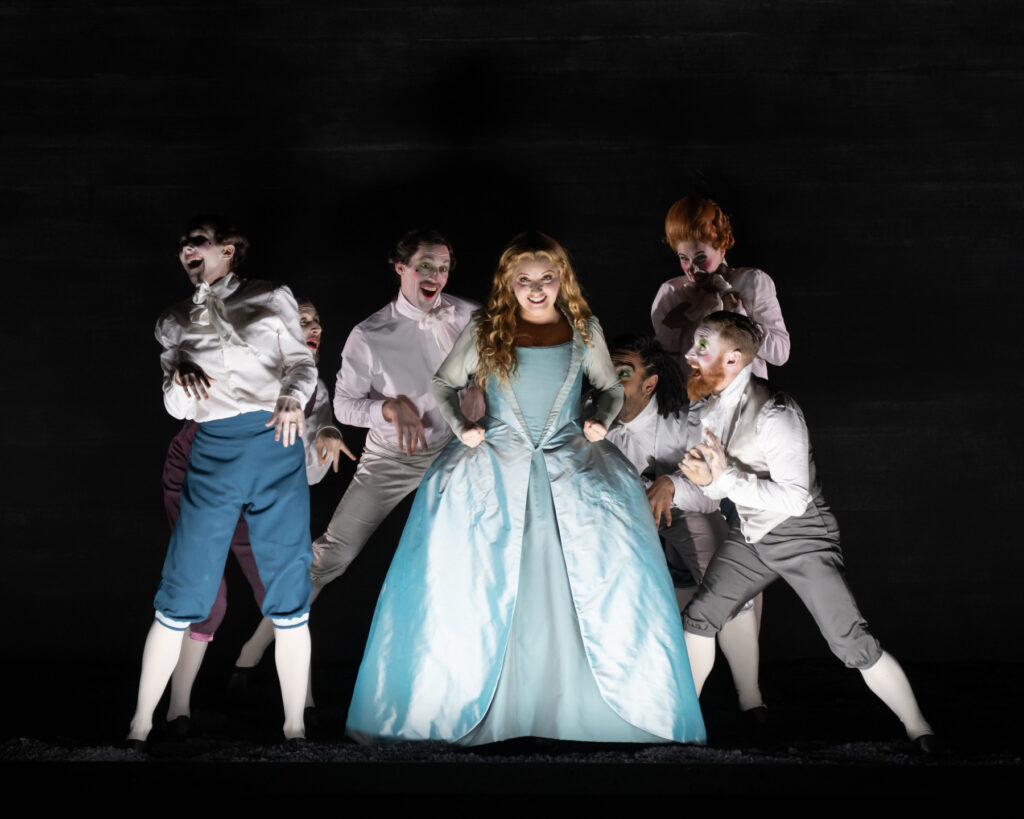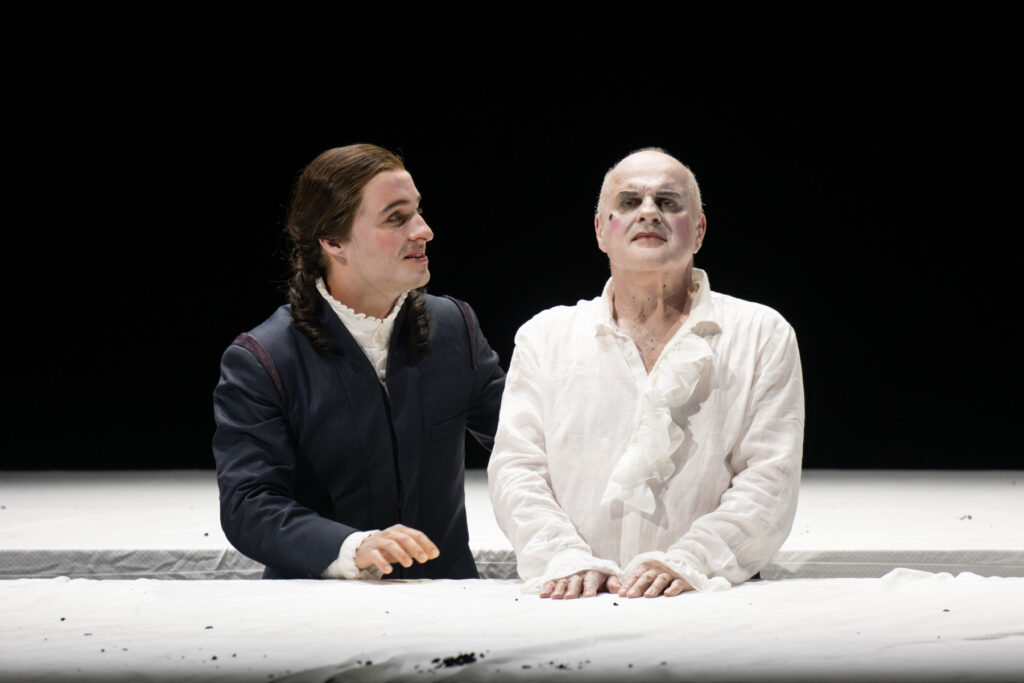I found myself listening at home to Saul a few months ago (Charles Mackerras’s outstanding Leeds Festival recording with Donald McIntyre, James Bowman, Margaret Price, et al.). It made for often uncomfortable listening, the ever-problematical identification of Handel’s Protestant England with the ‘children of Israel’ all the more when daily we see the Philistines’ successors mercilessly slain in the name of a latter-day ‘Eretz Israel’, itself the product of the imperialism on which the new, fiscal-military state of Great Britain had been founded. Culminating in news from the Amalekite – David’s ‘Impious wretch, of race accursed!’ – that Saul has been slain and Israelite exhortation to ‘Gird on thy sword, thou man of might’, it seemed both a work both for now and absolutely not. At least it was not Joshua or Judas Maccabeus, I thought; and indeed its central dramatic concerns are not necessarily those, however glaring they may stand out now. The work’s political dimension is important, but is one of several and arguably not the most important. In any case, it extends beyond war and empire to broader questions of kingship—not least given the precedent of the Whig establishment’s treasonous support for the Dutch invasion that had removed ‘the Lord’s anointed’ within living memory, and without which George II would stand nowhere near the throne.

Barrie Kosky’s Glyndebourne production of Saul was first seen in 2015: what may now seem a very different world, prior to Britain’s fateful referendum, Trump’s election, Covid, the invasion of Ukraine, and of course genocide in Gaza. None of those things came out of nowhere, of course, but the world was different. He was – and is – perfectly entitled to explore other aspects of the drama, and it is neither his nor revival director Donna Stirrup’s fault that events have overtaken us. Kosky offers a typically pugnacious, persuasive defence of staging such works at all and of his particular aesthetic in the programme. ‘But when you put Handel’s oratorios on stage you know that there will be a flood of opera reviewers who’ll say these pieces were not written for the stage, so why are we staging them? Get real! Opera is not about rules and regulations. Handel’s oratorios are sometimes more dramatic than his operas. We know that because we can hear it. Their musical landscapes are often more radical than those of the operas.’ I agree with every word. Why, then, beyond the inevitable unease concerning aspects of the drama, did I have my doubts—as someone who has long thought it cried out for the stage?
There are problems intrinsic to the work, of course, as there always have been, lying beyond the cul-de-sac of alleged intention. The chorus’s role is one: how to deal with it onstage? Kosky certainly makes the most (as, for instance, in his Komische Oper Hercules) of his opportunities in this respect. An opening festal tableau, gestures arrestingly frozen, draws one in, Kosky’s detailed direction of each member of a crowd that also combines with excellence en masse dovetailing with Katrin Lee Tag’s painterly vision. An eighteenth-century audience, so it seems, participates, mirroring the dual function of the chorus itself, roots in Greek tragedy apparent and brimming with dramatic potential.

The problem for me comes with elements of the conception of the protagonists. Not all of it: much shows great insight. A brazenly opportunist David is the trump card: charisma born of body and battle, seemingly willing to do anything – or anyone – to further his clear yet unstated lust for power. Why bother to spell it out, when the crowd will for him? ‘Saul, who hast thy thousands slain, welcome to thy friends again! David his ten thousands slew, ten thousand praises are his due!’ There is, moreover, a creditable effort to make more of Saul’s daughters and their roles, though that also leads us to more difficult territory. In that programme interview, Kosky states his dislike of realism, but that seems to refer to aesthetics rather than to psychology. (I actually would not have minded more on the former side and less dance, however finely accomplished; but that is a matter of taste, no more.) It is a particular form of psychological realism that, though I can see the temptation, also leads the drama to become less interesting and arguably less coherent. If one portrays calculation in such realistic way, there is nothing ‘mad’ about Saul’s reaction. Michal and still more Jonathan must simply be in love with David, which is obviously part of what is going on but surely not the only or overriding dramaturgical concern. And the decision to present Saul for much of the time as if already in Bedlam – perhaps even as if a flashback – is ultimately reductive, again crowding out other concerns.

Set against that, the darker turn following the interval makes an undeniably strong impression. There is a splendid star-turn (literally) from the revolving solo organist onstage. When Saul visits the Witch of Endor, Kosky offers a nice sense of Tiresias in Beckettland, to the weird, disconcerting extent that Saul feeds from one of the Witch’s breasts. The doomed monarch also voices Samuel’s words himself: possessed or merely delusional? If Kosky and Tag’s Beckettland looks surprisingly (or unsurprisingly) close to that seen for their Castor et Pollux (ENO and elsewhere) and Don Giovanni (Vienna), most production teams have recognisable correspondences over time. Richard Jones & Co. anyone? The important question is what one does with them.
Jonathan Cohen’s conducting I found more difficult to get on with: not only aggressively ‘period’, but of a variety that too often skated over Handel’s strengths as a musical dramatist. There was little grandeur, if often much rasping noise. The Orchestra of the Age of Enlightenment strings might surely have been permitted fuller tone at times. Excellent woodwind fared better: characterful and dramatically telling. Handel’s writing for bassoon – not only in the Witch of Endor scene – is worth an essay alone from someone. It certainly sounded so here. Greater variety of tempo was achieved as time went on, if there were still cases, especially in choral numbers, when breakneck speed disrupted ensemble.

Christopher Purves’s Saul was superbly acted, if sometimes a little close to Sprechgesang (leaving aside purely spoken interjections further to enhance the impression of insanity). There was often, though, a thinness of tone to his delivery that complemented Cohen’s way with the orchestra, but which on ‘purely’ musical terms left me at least missing something more bass-like. Iestyn Davies’s David was outstanding in every respect: word, tone, and gesture a model of characterisation. Sarah Brady and Soraya Mafi offered a haughty Merab and an attractive, calculating Michal, in fine dramatic contrast both with one another and with the honeyed, imploring sincerity of Linard Vrielink’s Jonathan. Kosky’s amalgamation of Abner, High Priest, and Doeg, into a single Fool-like character elicited sinister ambiguity from Liam Bonthrone, who also took on the ‘cursed’ role of the Amalekite, mysteriously hooded in the auditorium. Ru Charlesworth offered a darkly vivid portrayal for Kosky and Handel’s strange conception of the Witch of Endor. The Glyndebourne Chorus likewise responded to a varied set of challenges – Handel’s, Kosky’s, and Cohen’s – with fine musical and dramatic dedication.
My reservations, then, were relatively minor. Audience enthusiasm suggested they were little shared. This was a highly enjoyable occasion, though might it have offered more dramatically? To my dismay, I could not help but wonder whether a concert performance, albeit differently conducted, might have come closer in that respect.
Mark Berry
Saul, HWV 53
Dramatic oratorio by George Frideric Handel
Libretto by Charles Jennens
David – Iestyn Davies; Merab – Sarah Brady; Michal – Soraya Mafi; Jonathan – Linard Vrielink; Abner, High Priest, Doeg, Amalekite – Liam Bonthrone; Witch of Endor – Ru Charlesworth; Dancers – Lucy Alderman, Robin Gladwin, Lukas Hunt, Dominic Rocca, Nathan Ryles, Daisy West.
Director – Barrie Kosky; Revival director – Donna Stirrup; Designs – Katrin Lea Tag; Choreography – Otto Pichler; Revival choreography – Merry Holden; Lighting – Joachim Klein; The Glyndebourne Chorus (chorus director: Aidan Oliver); Orchestra of the Age of Enlightenment; Conductor – Jonathan Cohen.
Glyndebourne Festival Opera, 8 June 2025
Top image: Merab (Sarah Brady), Jonathan (Linard Vrielink), Michal (Soraya Mafi), David (Iestyn Davies), Saul (Christopher Purves), and members of the Glyndebourne Chorus
All photos © Glyndebourne Productions Ltd. Photography by ASH